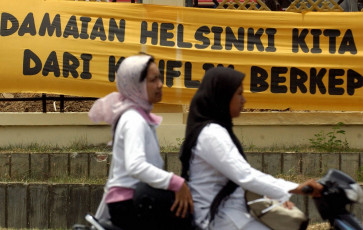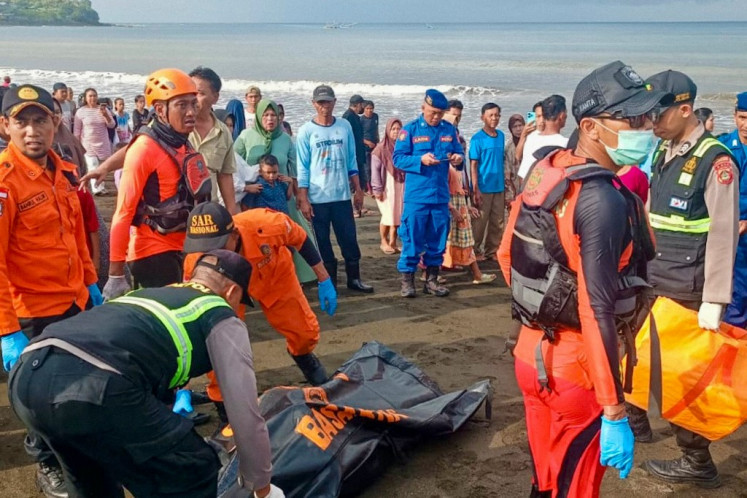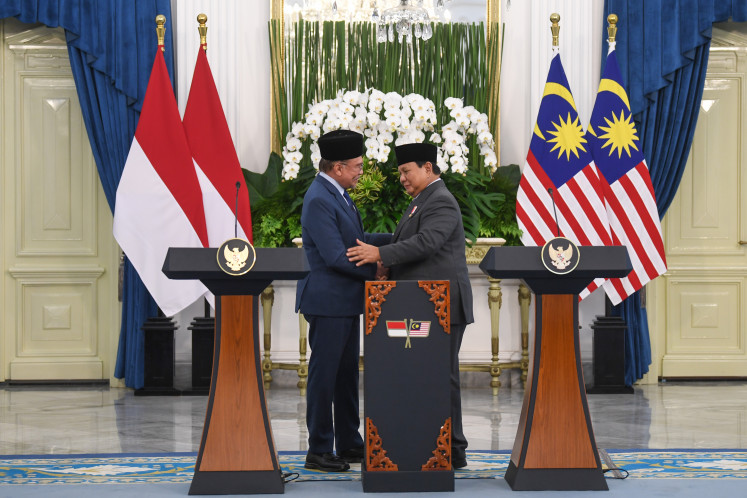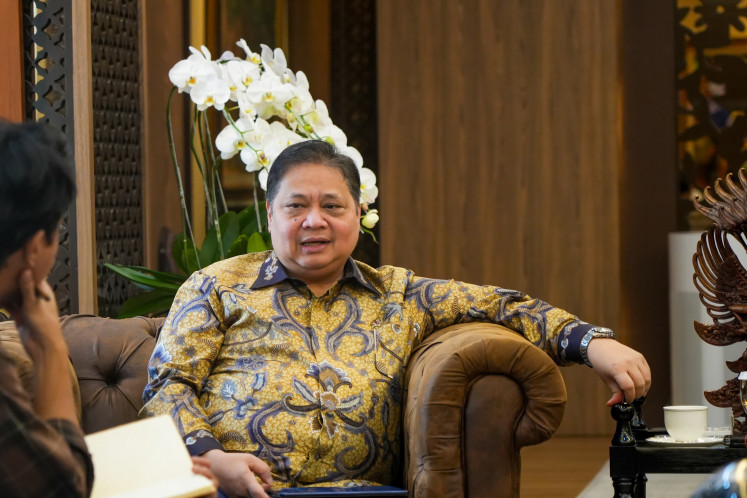Popular Reads
Top Results
Can't find what you're looking for?
View all search resultsPopular Reads
Top Results
Can't find what you're looking for?
View all search resultsInclude Papuans in policy-making
Papua, which is the western half of the island of New Guinea, was incorporated into the Republic of Indonesia in 1963
Change text size
Gift Premium Articles
to Anyone

P
apua, which is the western half of the island of New Guinea, was incorporated into the Republic of Indonesia in 1963. Despite the development activities conducted by the government in Papua for five decades, the facts on the ground demonstrate that Indonesian nationalism has not taken root in the hearts of indigenous Papuans.
One can easily identify the signs indicating the lack of Indonesian nationalism among Papuans. Some Papuans still associate themselves with the Free Papua Movement (OPM). They do not call themselves Indonesians. They consider the Indonesian government a colonizer and their ancestral land of Papua occupied territory. They have been resisting the government up to the present day.
As of today, Papuan resistance is manifested through a call for a referendum raised mostly by young Papuans born in the 1980s, the annual celebration of the OPM's day of independence on Dec. 1 and the killing of Indonesian police and military personnel by the OPM's armed wing, the Papua Liberation Army Front (TPN). The raising of the OPM's Morning Star flag constitutes another symbol of resistance.
All these signs indicate not only a lack of Indonesian nationalism but also the absence of lasting peace in Papua. They are reflections of Papua's unsettled conflict.
During the New Order era, the government prioritized a security approach to address the Papua conflict. The government was determined to settle the conflict with the use of guns.
The government back then declared Papua a military operation zone (DOM). The military took control of the territory and determined policies in Papua.
All OPM members were considered separatists who wanted to destroy Indonesia's territorial integrity. They were considered enemies of the Indonesian state and, therefore, deserved to be eradicated from Indonesian territory.
Massive military operations were conducted to eradicate the OPM, resulting in the killing of many people, both civilians and military personnel. The exact number of victims, however, has never been determined.
The only investigative report on the victims of the military operations was made by the Hong Kong-based Asian Human Rights Commission (AHRC). The commission investigated the military operations conducted in Jayawijaya regency in 1977-1978 and published its report in November 2013 under the title: The Neglected Genocide: Human Rights Abuses against Papuans in the Central Highlands, 1977-1978. The report revealed that at least 4,146 Papuans were killed in the operations, and even identified the victims by name.
Papuans who considered themselves Indonesian citizens were also suspected by the government as being OPM supporters. They were not trusted by the government. As such, it was not easy for them to gain promotion to higher positions in government offices or to achieve political power.
Due to the security approach, Papuans were not treated like human beings, let alone Indonesian citizens. They were deliberately excluded from policy-making.
The military solution brought about human rights violations, as well as deep suspicion and distrust between the central government and the Papuan people. It ultimately triggered within Papuans antipathy toward Indonesia.
In the reform era, the government promoted a prosperity approach for Papua, manifested through the Special Autonomy legislation, which was introduced in 2001.
The autonomy policy allows Papuans to take the lead in their regions. The two governors and all the regents of the two provinces ' Papua and West Papua ' are Papuans. They also make up the majority of the members of the legislative councils in the provinces and regencies, and they run most of the local government offices and political parties.
Nevertheless, the autonomy approach has been strongly rejected by ordinary Papuans and the OPM because they were not consulted in the policy-making process.
Due to improper implementation of the policy, all the fundamental problems triggering demands for independence remain unresolved, while the welfare of the majority of the indigenous population has not improved.
All economic activities in the Papua and West Papua provinces are still dominated by non-Papuans. The Papuans themselves remain economically poor, weak and marginalized.
Instead of consistently implementing the autonomy policy, the government multiplied the number of new policies, such as forming new regencies in 2002, creating West Papua province in 2003, speeding up development in 2007 and 2011 and establishing a special unit for accelerating development in Papua and West Papua provinces in 2011.
In November 2013, the House of Representatives agreed to create some 30 new regencies and three new provinces, but they have not yet been approved by President Susilo Bambang Yudhoyono.
Once Papua was offered autonomy in 2001, the military began to multiply its troops in Papua and West Papua provinces. Nevertheless, the exact number of troops assigned in the two provinces has not been made public.
The deployment of these additional troops is manifested in more military personnel in three old battalions (in Sorong, Nabire and Jayapura), the formation of three new battalions (Timika, Wamena and Merauke) and the expansion of the Indonesian Military's (TNI) territorial commands by establishing several new district and subdistrict commands.
Hundreds of troops originating from other Indonesian provinces are deployed for several months to Papua, and replaced by new troops every year. The police also continue to multiply their personnel in Papua, forming new resort commands in every regency. They are now on the front line in defending Indonesia's territorial integrity and dealing with the OPM.
The multiplication of policies has contributed little to peace in Papua. In fact, the Papua conflict remains unresolved - and Indonesian nationalism is not taking root in Papuans' hearts.
This article is not intended to propose another new policy for Papua. Rather, it is meant to explore the best way of producing polices for Papua. Therefore, the main question should be: 'How can we peacefully settle the Papua conflict while, at the same time, planting the seeds of Indonesian nationalism in the hearts of all Papuans?' This question leads us to think more about the methodological aspect than the content of a particular policy.
With regard to the Papua issue, the question of methodology should not be ignored. The importance of the methodological dimension is not a secondary matter. Rather, it is a fundamental dimension that determines the Papuan people's response to any policy produced by the government.
The methodological aspect has been the main criterion for Papuans to examine which policy should be accepted or rejected. They can strongly reject any policy that is well-formulated in legal terms but worked out with unsuitable methodology.
A methodology, one that is correct and relevant to the nature of the Papua conflict, is now urgently needed. One can easily examine the methodology used in implementing any policy for Papua by looking at the kind of mechanism applied and the participants involved.
It seems that the government has been applying an exclusive mechanism that allows only a few experts and senior government officials in Jakarta to participate in the discussions and formulation of policies for Papua. This mechanism has intentionally excluded Papuans from policy-making over the past 50 years, since Papua was incorporated into Indonesia.
Consequently, Papuans have no sense of ownership concerning all the government-determined policies for Papua. Some policies are completely unknown by Papuans, while several other policies are implemented without legitimacy despite being rejected by Papuans.
Therefore, an inclusive mechanism is recommended for use in policy-making regarding Papua. This would enable the government to recognize the presence of other actors, such as non-Papuans living in Papua and West Papua provinces, Papuans who support the government, the OPM leaders in the jungle and in the diaspora, religious leaders and tribal leaders, youth leaders and women leaders.
An inclusive mechanism would allow all stakeholders, most particularly the OPM leaders in the jungles of Papua and in the diaspora, to participate fully and actively in the solution-seeking process. An inclusive mechanism would also enable the government to consider Papuans as human beings and respect their Indonesian citizenship.
The recognition of Papuans' dignity as human beings and their citizenship, in turn, would serve as a foundation for the government to include them in the policy-making process. The government may even come to treat OPM members as its partners in jointly seeking a peaceful and democratic solution to the Papua conflict.
The time is now ripe for the government to form a team to deal with the Papua issue. This team could be assigned to set up an inclusive mechanism to provide a safe space for each stakeholder to participate fully in the policy-making process.
Only policies that are jointly discussed, agreed upon and accepted by all the relevant parties will be able to resolve the Papua conflict and plant Indonesian nationalism in the hearts of all Papuans.









